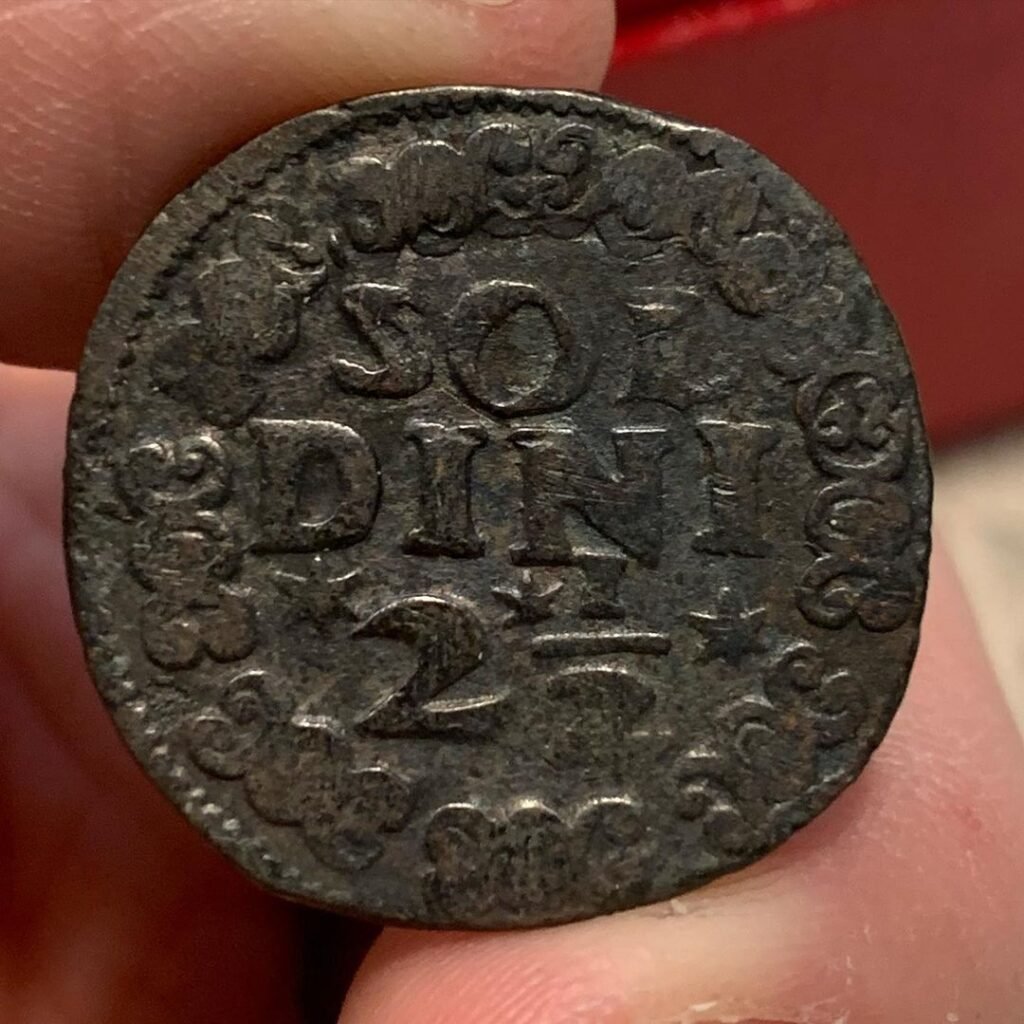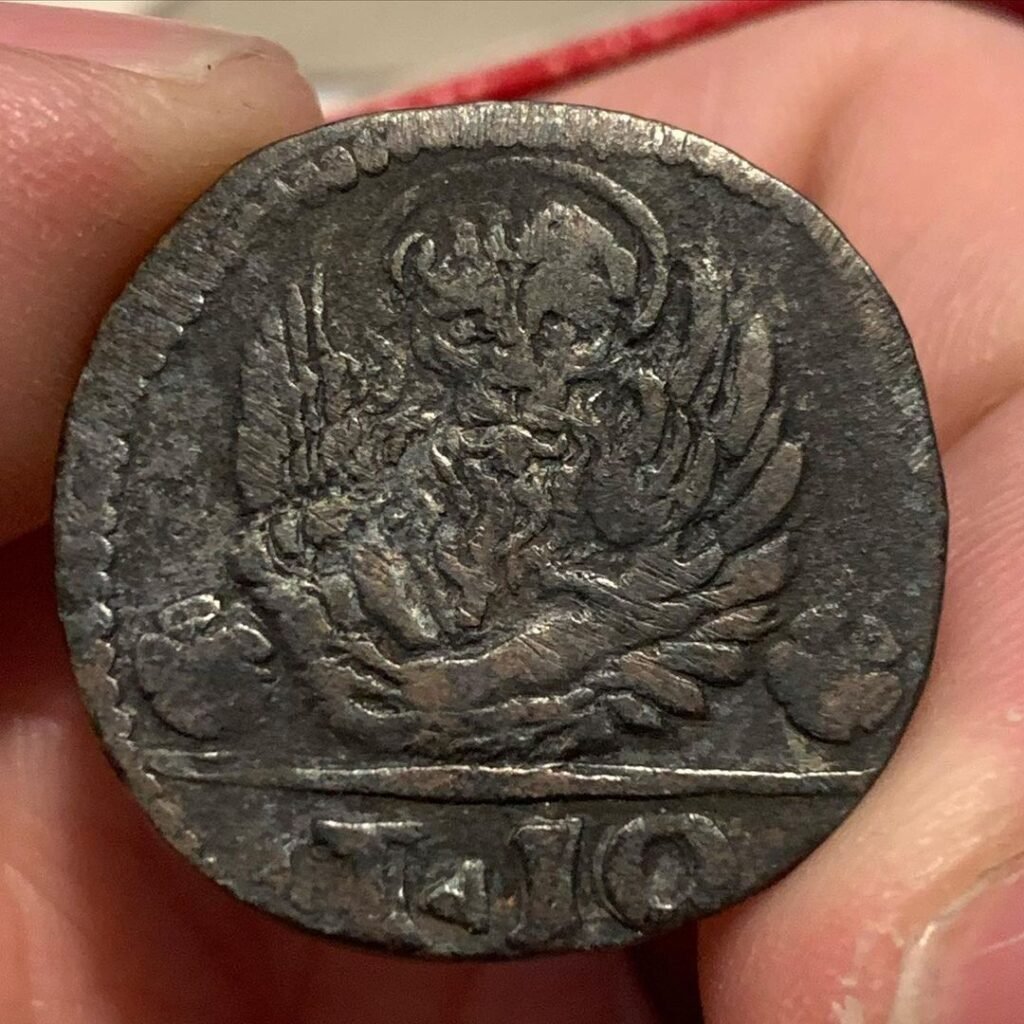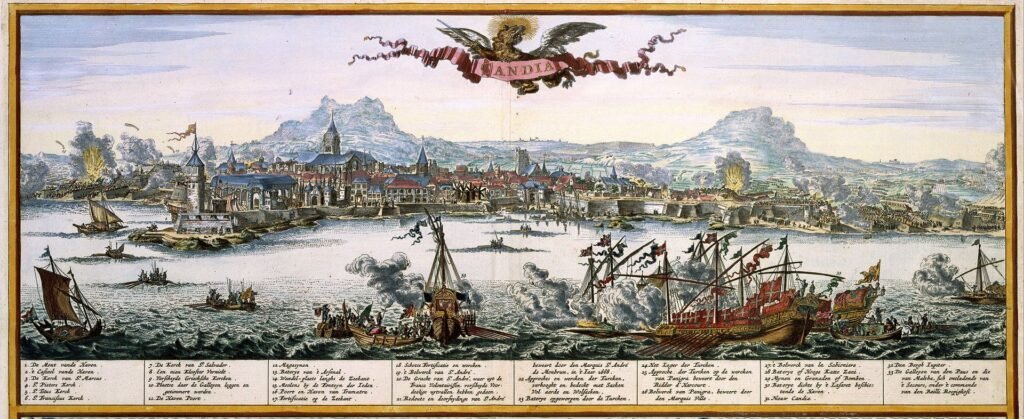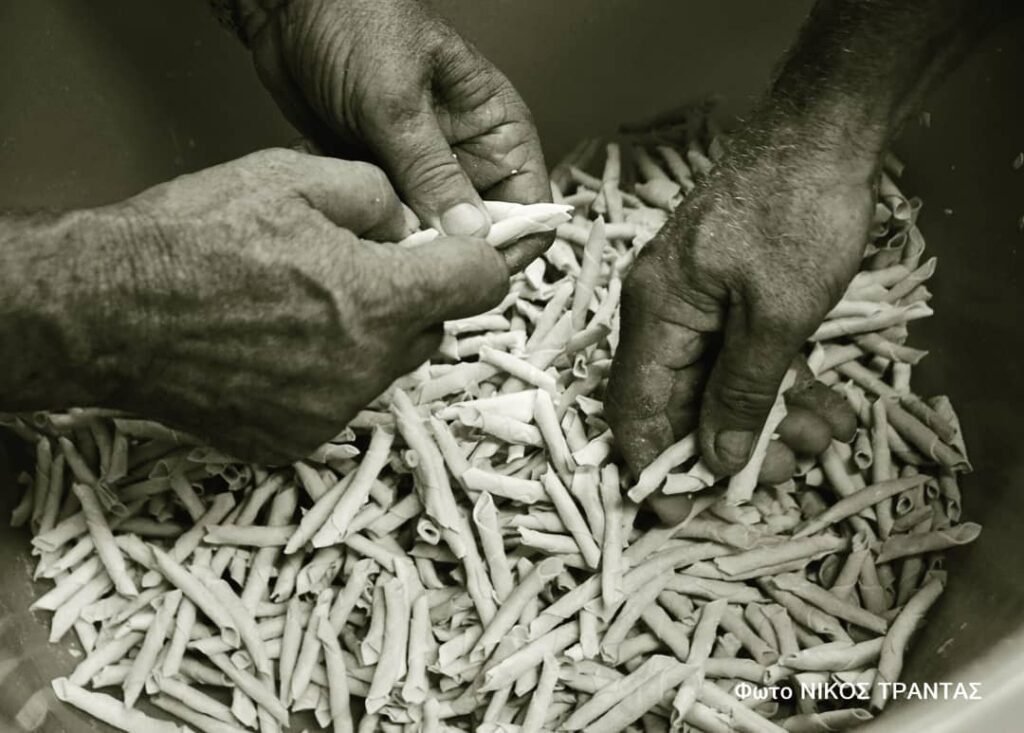You might think of Crete as purely Greek, but there’s a hidden layer to its identity that’s often overlooked. For over four centuries, Venice held sway over this Mediterranean island, leaving an indelible mark on its culture, architecture, and way of life.
From the moment you set foot on Cretan soil, you’ll encounter traces of this Venetian legacy everywhere you turn. But what exactly did the Venetians bring to Crete, and how deeply did their influence penetrate?
The answers might surprise you, revealing a complex tapestry of cultural exchange that continues to shape the island today.
Key Events of Venetian Rule in Crete:
- 1204: Venice gains rights to Crete following the Fourth Crusade
- 1211: Venetian colonization of Crete begins
- 1252: Chandax (Heraklion) becomes capital of Venetian Crete
- 1363: Revolt of St. Titus against Venetian rule
- 1453: Fall of Constantinople increases Crete’s strategic importance
- 1527: Peak of Cretan Renaissance in art and literature
- 1645: Ottoman invasion of Crete begins
- 1645-1669: The Siege of Candia
- 1669: Fall of Candia (Heraklion) marks end of Venetian rule

Venetian Acquisition of Crete
Few events shaped Crete’s destiny as profoundly as its acquisition by Venice in the early 13th century. You might wonder how this tiny Italian city-state came to rule over an island in the eastern Mediterranean. Well, it’s a tale of crusaders, cunning diplomacy, and a bit of luck!
In 1204, the Fourth Crusade took an unexpected turn. Instead of liberating Jerusalem, the crusaders sacked Constantinople. Venice, being the savvy maritime power it was, saw an opportunity. They negotiated for the rights to Crete as part of the spoils. Talk about a strategic move.
But don’t think the Venetians just waltzed in and took over. Oh no, it wasn’t that easy. When they arrived in 1211 to start colonizing, they faced fierce resistance from the local population. Can you imagine trying to govern an island where you’re vastly outnumbered? It took decades of conflict and compromise before Venice could truly call Crete its own. This rocky start set the stage for a complex relationship that would last for over four centuries.

Architectural Transformations: A Venetian Makeover
As you wander through Crete’s cities and towns, you’ll find yourself surrounded by echoes of Venetian influence. The island’s architecture tells a fascinating story of cultural blending, where Cretan and Venetian styles merged to create something uniquely beautiful.
Let’s start with the grand structures.

Standing on the waterfront in Heraklion, you can’t miss the imposing Koules Fortress. This isn’t just any old castle; it’s a testament to Venetian military engineering. Its massive walls and strategic position served as a formidable defense, but the Venetians also ensured it was aesthetically pleasing. It’s a perfect example of how they combined function with style.
Take a stroll through the narrow streets of Chania or Rethymno, and you might notice something different about the layout compared to other Greek towns. Those wide, straight streets and grand piazzas? That’s Venetian urban planning at work. It’s as if they transplanted a piece of Venice right here on Cretan soil.

Keep an eye out for the elegant loggie – those charming arcaded galleries that seem to invite you in. These weren’t just architectural flourishes; they were the social hubs of their day, where Cretans and Venetians would gather to socialize, conduct business, and watch the world go by.
The Venetians left their mark on religious architecture too. They didn’t just build – they fused styles. You’ll find churches where Byzantine domes sit comfortably alongside Gothic arches, all wrapped up in a distinctly Cretan package. The monastery of Arkadi is a prime example of this architectural blend, showcasing how the island’s builders merged Eastern and Western influences.

Even in Cretan villages, you can spot Venetian influences. Look for the grid layout and central square – hallmarks of Venetian town planning. It’s as if the Venetians left their architectural signature across the island, visible even centuries later.
These architectural elements aren’t just old buildings; they’re living reminders of Crete’s complex history. Each stone tells a story of cultural exchange, adaptation, and the unique identity that emerged from four centuries of Venetian rule.
Cultural Fusion: A Cretan-Venetian Blend
The 400 years of Venetian rule in Crete didn’t just reshape the island’s skyline; it profoundly influenced its cultural landscape. This period saw a fascinating merging of Cretan and Venetian traditions, resulting in a unique cultural identity that still resonates today.


The Venetian influence seeped into every aspect of Cretan life, including language. The Cretan dialect still carries echoes of Venetian words and expressions – but more on that linguistic legacy later.
The Venetian period witnessed the birth of the Cretan Renaissance, a cultural flourishing that left an indelible mark on the island’s artistic legacy. Imagine 16th century Candia (modern-day Heraklion) as a hub of creativity, bustling with artists, poets, and scholars. This cultural awakening produced works that blended Byzantine traditions with Venetian techniques.
One of the most famous figures to emerge from this period was Domenikos Theotokopoulos, better known as El Greco. Born in Crete and trained in Venice, El Greco’s early works, such as the “Dormition of the Virgin,” beautifully exemplify the fusion of Cretan and Venetian artistic styles. His journey from Crete to Venice and ultimately to Spain reflects the far-reaching influence of this cultural cross-pollination.

Music, too, evolved during this time. The Cretan lyra, a descendant of the Byzantine lyra, adapted to new influences. While its core remained Byzantine, the Venetian period saw subtle changes in playing techniques and musical styles, blending Eastern and Western elements. This evolution exemplifies how local traditions grew under Venetian influence, creating Crete’s unique musical identity.
Even Cretan dances bear witness to this cultural blending. The Syrtos, a popular Cretan dance, maintains the circular formation typical of Greek dances but incorporates elements that hint at Venetian influence. It’s a living, moving embodiment of Crete’s multicultural history.
This cultural fusion wasn’t a simple case of one culture dominating another. Instead, it was a gradual, 400-year process of mixing and adapting, taking elements from both Cretan and Venetian traditions to create something new and distinctly Cretan.

Agricultural Innovations: Venetian Green Thumbs
When you think of Venetians, you might picture gondolas and grand palaces. But in Crete, they left their mark on the land itself. The Venetians didn’t just rule Crete; they revolutionized its agriculture.
Imagine vast vineyards stretching across the Cretan landscape. That’s the Venetian touch right there. They transformed Crete into a wine-producing powerhouse, introducing new grape varieties and winemaking techniques. Today, when you sip a glass of Vidiano or Kotsifali, you’re tasting a bit of that Venetian legacy.

But it wasn’t all about the grapes. The Venetians had a green thumb for olives too. They brought advanced pressing techniques that boosted oil production. Next time you drizzle some Cretan olive oil on your salad, give a little nod to those Venetian innovators.
The impact of these agricultural advancements went beyond mere crop yields. They reshaped Cretan society and economy in profound ways:
- The expansion of vineyards and olive groves created new job opportunities, shifting some of the population from subsistence farming to cash crop production.
- Improved irrigation systems allowed for the cultivation of water-intensive crops like citrus fruits, adding vibrant new flavors to Cretan cuisine.
- The introduction of terracing not only increased arable land but also helped prevent soil erosion, preserving Crete’s fertile soil for future generations.
Even today, you can see the Venetian agricultural legacy in action. Many of the island’s oldest olive trees, many over 500 years old, date back to the Venetian period. These gnarled giants are living monuments to Crete’s agricultural history.
Maritime Developments: Crete’s Naval Transformation

The Venetians didn’t just reshape Crete’s land; they revolutionized its relationship with the sea. Under their rule, Crete’s coastline underwent a dramatic makeover that would make any marine architect proud.
Picture this: bustling harbors protected by massive breakwaters, lighthouses guiding ships safely to shore, and fortresses standing guard over busy ports. That’s Venetian Crete for you! The crown jewel? The famous Koules fortress in Heraklion – a testament to Venetian engineering that still wows visitors today.
But it wasn’t all about defense. The Venetians established thriving shipyards where skilled craftsmen built and repaired vessels of all sizes. Suddenly, Cretan ports were abuzz with activity, hosting merchants, sailors, and travelers from across the Mediterranean.
This maritime focus had far-reaching effects:
- It boosted trade, connecting Crete more closely with other parts of the Venetian empire and beyond.
- New job opportunities emerged in shipbuilding, navigation, and trade.
- Crete’s strategic importance in the Eastern Mediterranean grew significantly.

Even today, as you stroll along the old Venetian harbors in Chania or Rethymno, you’re walking in the footsteps of this maritime legacy. The Venetians may have sailed away centuries ago, but their impact on Crete’s coastal identity remains as strong as the fortresses they left behind.
Governance and Social Structures: A New Order
When the Venetians arrived in Crete, they didn’t just bring new buildings and crops – they introduced a whole new way of organizing society. Imagine waking up one day to find your entire social world turned upside down. That’s pretty much what happened to the Cretans.
The Venetians introduced a feudal system, dividing the island into fiefs and granting land to noble families. Suddenly, Cretan society was stratified into distinct classes: nobles, citizens, and peasants. It was like a real-life game of snakes and ladders, with your birth determining your place on the board.

But it wasn’t all about social hierarchy. The Venetians also brought some significant changes:
- They overhauled the legal system, implementing their own laws and courts.
- Education got a boost with the establishment of schools and the introduction of printing presses.
- A centralized government was set up in Candia (modern-day Heraklion), with a Venetian-appointed Duke at the helm.
Interestingly, while the Venetians were in charge, they didn’t completely squash local customs. Local councils, known as “regimen,” helped manage day-to-day affairs, allowing for a degree of Cretan participation in governance.
This blend of Venetian and Cretan elements in governance and society created a unique cultural landscape. It’s a testament to Crete’s adaptability that elements of this system persisted long after Venetian rule ended.
Culinary Evolution: A Taste of Venetian Crete

Think Cretan cuisine is all about ancient Greek traditions? Think again! The Venetians stirred the pot, quite literally, introducing new flavors and techniques that forever changed the island’s culinary landscape.

Here are some key Venetian influences on Cretan cuisine:
- Pasta: The Venetians introduced pasta dishes like skioufichta and makarounes, hand-rolled Cretan pasta that are now local staples.
- Layered dishes: Boureki, a dish of layered zucchini, potatoes, and myzithra cheese, reflects Venetian casserole techniques.
- Pastries: Kalitsounia, small Cretan cheese pies, showcase Venetian pastry-making skills with their crispy phyllo.
- Desserts: Tiganites, fried dough drizzled with honey, evolved from Venetian confectionery traditions.
- Cheese-making: Venetian influence helped refine local cheese-making techniques and promoted the dairy industry, which contributed to the preservation and development of Crete’s renowned cheeses like myzithra (an ancient Cretan cheese) and graviera (influenced by later European traditions).
- Viticulture: The Venetians revolutionized Cretan wine production, introducing new grape varieties and winemaking methods.

These culinary innovations have become integral to Cretan cuisine, demonstrating the long-lasting impact of Venetian rule on the island’s food culture.
Artistic Renaissance: Crete’s Creative Explosion
Under Venetian rule, Crete didn’t just change politically and economically – it experienced a cultural rebirth that would make even Florence jealous. Welcome to the Cretan Renaissance.
Picture Candia (modern-day Heraklion) in the 16th century: a buzzing hub of artistic activity where Byzantine traditions melded with Venetian techniques. The result? A unique artistic style that put Crete on the cultural map.

As mentioned earlier, Domenikos Theotokopoulos, or El Greco, was a key figure in this period. His unique style inspired a generation of Cretan artists, catalyzing the island’s artistic evolution.
But it wasn’t all about painting:
- Literature flourished, with poets like Vitsentzos Kornaros penning epic works like “Erotokritos”
- Sculpture and woodcarving reached new heights, adorning churches and public buildings
- Music evolved, with traditional Cretan instruments adapting to new influences
This artistic boom wasn’t confined to the elite. Churches and monasteries became treasure troves of artistic innovation, accessible to all. The Cretan School of icon painting, blending Byzantine tradition with Western influences, emerged during this period, leaving a lasting impact on religious art.
Linguistic Influences: A Venetian Accent
If you’ve conversed with Cretans, you might have noticed some words that sound a bit different from standard Greek. That’s the Venetian influence at work.

Here are a few examples of Venetian-influenced words still used in the Cretan dialect:
- Στράτα (strata) – In Cretan, this word is used for “road” or “street,” which comes from the Venetian “strada.” The standard Greek word is “δρόμος” (dromos).
- Φουρνάρης (fournaris) – Meaning baker, this word comes from the Venetian “fornaro,” reflecting the word for oven or bakery, whereas the ancient Greek word was “αρτοποιός” (artopoiós).
- Μπαλκόνι (balkoni) – This comes from the Venetian word “balcone,” and is widely used in modern Greek for “balcony,” replacing older Greek alternatives like “εξώστης” (exostis).
These linguistic quirks add a distinctive flavor to the Cretan dialect, serving as everyday reminders of the island’s Venetian past.
But it’s not just vocabulary. The Cretan accent, with its slightly sing-song quality, bears traces of Venetian influence too. Listen closely, and you might catch echoes of Venice in the tavernas of Chania or the villages of Lasithi.

This linguistic legacy isn’t just a curiosity – it’s a living reminder of Crete’s complex history, spoken daily across the island.
Modern Venetian Heritage: Past Meets Present
The Venetians may have sailed away centuries ago, but their influence in Crete is far from ancient history. Today, Venetian heritage is a vibrant part of modern Cretan life.
In cities like Chania and Rethymno, beautifully preserved Venetian harbors and fortifications aren’t just tourist attractions – they’re integral parts of daily life. Locals sip their coffee in centuries-old loggias, and town festivals light up Venetian-era squares.
The Venetian legacy also plays a significant role in Crete’s economy:
- Restored Venetian buildings house boutique hotels and gourmet restaurants
- Venetian-era monuments are major tourist draws
- Traditional crafts with Venetian roots, like knife-making in Chania, continue to thrive

Cultural events celebrate this heritage too. The Renaissance Festival in Rethymno brings the Venetian era to life with period costumes, music, and reenactments.
Conservation efforts are ongoing, with both local and international organizations working to preserve Venetian-era buildings and artworks. The restoration of the Fortezza in Rethymno, for instance, has transformed a crumbling fortress into a living museum and cultural center.
Even Cretan cuisine continues to bear the mark of Venetian influence. Many popular dishes and wines have their roots in this period, offering food enthusiasts a literal taste of history.

Conclusion
As you explore Crete today, you’ll find the Venetian legacy woven into the very fabric of the island. From the imposing fortifications of Heraklion to the charming harbor of Chania, from the unique flavors of Cretan cuisine to the rhythms of traditional music, Venice’s influence is unmistakable. These enduring traces aren’t mere relics of the past; they’re living, breathing parts of Crete’s vibrant culture.
The island’s unique blend of Greek and Venetian elements creates an enchanting tapestry that continues to captivate visitors and locals alike. So, as you sip your Cretan wine or admire a centuries-old fresco, remember: you’re not just witnessing history, you’re experiencing the ongoing story of an island where two great Mediterranean cultures met and merged, creating something truly extraordinary.

